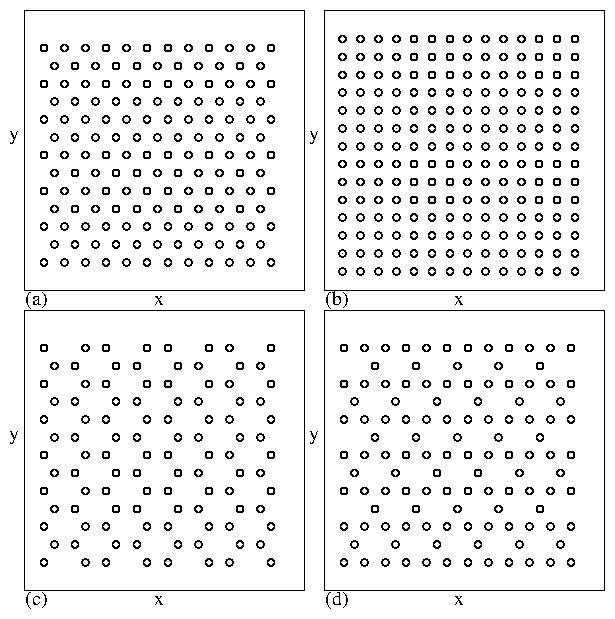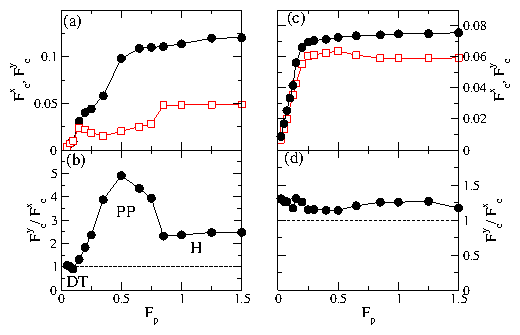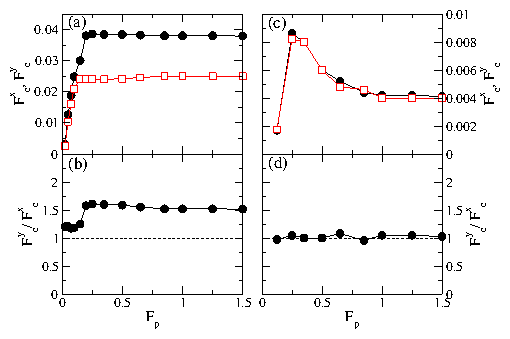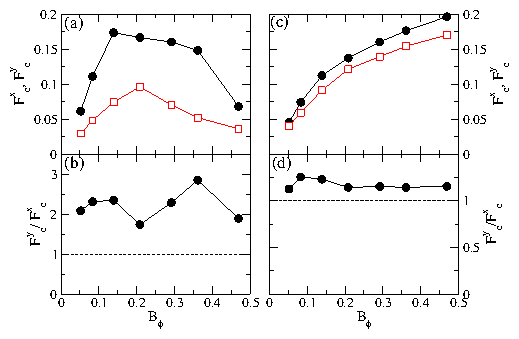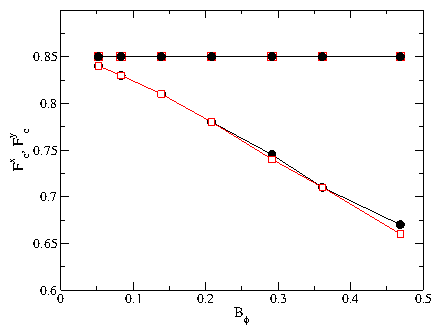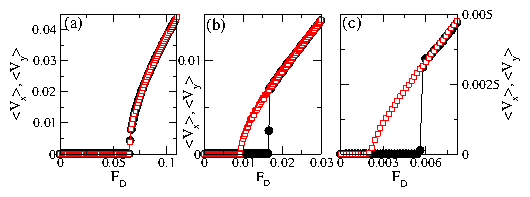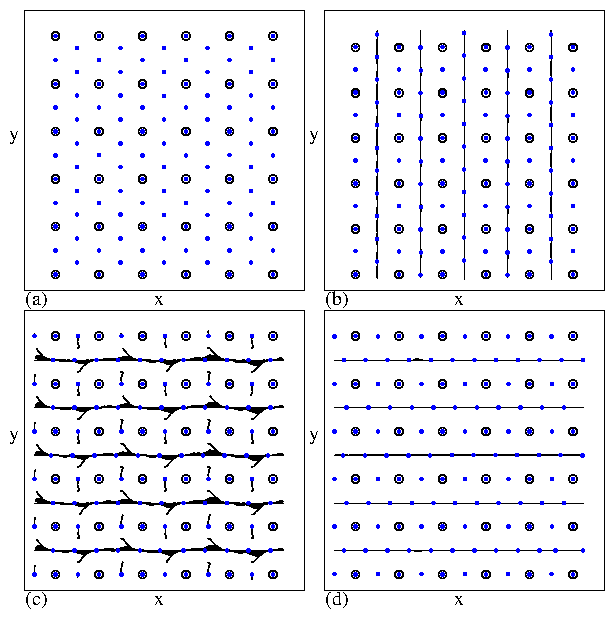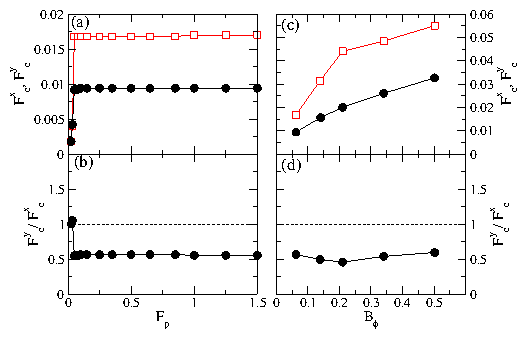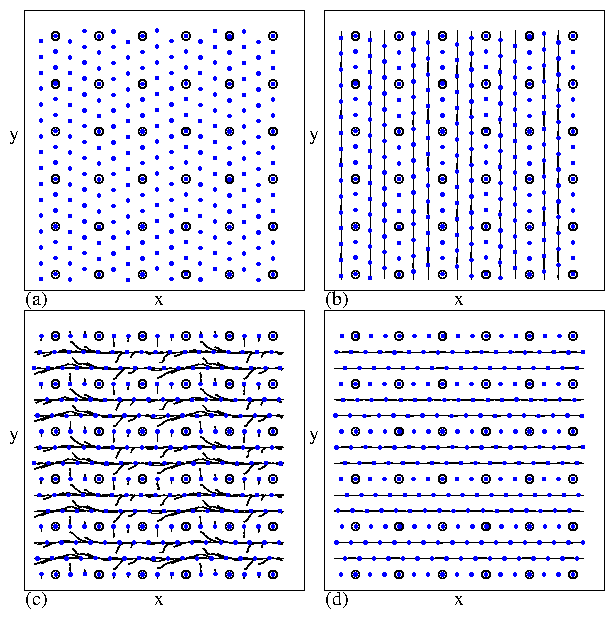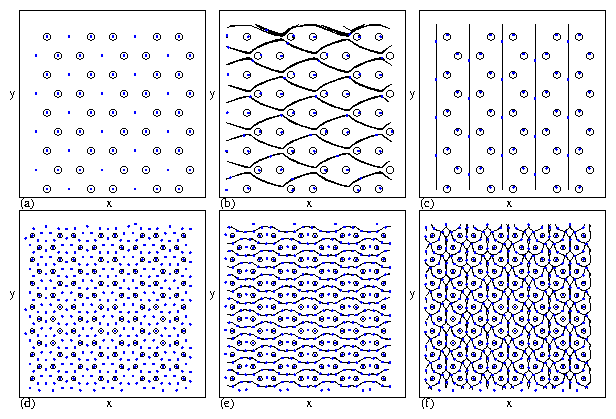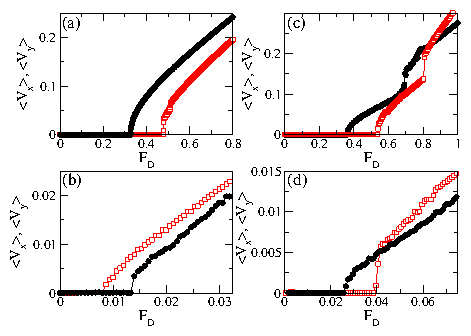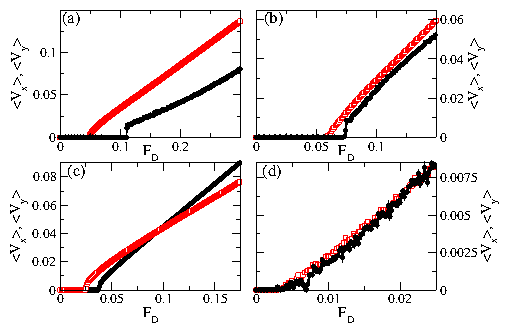 Figure 3:
Velocity-force curves for driving in the x-direction,
〈Vx〉 (open squares), and
in the y-direction, 〈Vy〉 (filled circles)
for the triangular pinning
lattice system in Fig. 2.
(a) At B/Bϕ = 2, the slope dVy/dFD < dVx/dFD.
(b) At B/Bϕ = 3,
dVy/dFD=dVx/dFD.
(c) At B/Bϕ = 4,
dVx/dFD < dVy/dFD,
resulting in a crossing in the velocity-force curves near FD = 0.1.
(d) At B/Bϕ = 5, the depinning is isotropic.
Figure 3:
Velocity-force curves for driving in the x-direction,
〈Vx〉 (open squares), and
in the y-direction, 〈Vy〉 (filled circles)
for the triangular pinning
lattice system in Fig. 2.
(a) At B/Bϕ = 2, the slope dVy/dFD < dVx/dFD.
(b) At B/Bϕ = 3,
dVy/dFD=dVx/dFD.
(c) At B/Bϕ = 4,
dVx/dFD < dVy/dFD,
resulting in a crossing in the velocity-force curves near FD = 0.1.
(d) At B/Bϕ = 5, the depinning is isotropic.
|
